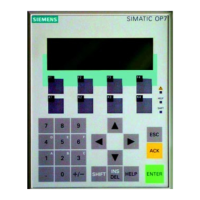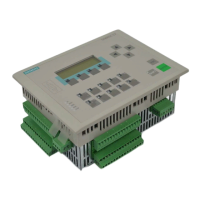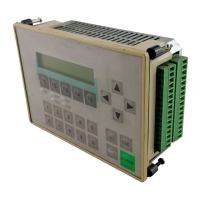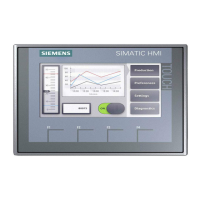Cables for analog signals
Always use shielded twisted-pair cables for the analog signals. This reduces the noise
interference. You should ground the shield of the analog cables at both ends.
If potential differences exist between the cable ends, an equipotential bonding current may flow
via the shield and disturb the analog signals. In this case, you must provide for a low-resistance
equipotential bonding, and, if necessary, ground the shield only at one end of the cable.
Observe the generally-applicable information regarding connection of loads/actuators in the
SIMATIC S7-300 Automation System, Module Data (
http://
support.automation.siemens.com/WW/view/en/8859629
/) manual.
Value ranges of the analog values
The behavior of the analog modules is dependent on the area of the value range in which
analog input values fall.
Table 10-9 Behavior of the analog modules as a function of the acquired measured value
Measured value with‐
in
Input value SF LED Diagnostic data record
0/1
Diagnostic inter‐
rupt
Nominal range Measured value - - -
Overrange/ under‐
range
Measured value - - -
Overflow 7FFFH Lit
1)
Entry made
1)
Diagnostic inter‐
rupt
1)
Underflow 8000H Lit
1)
Entry made
1)
Diagnostic inter‐
rupt
1)
1)
Only in the case of modules with diagnostic capability and depending on parameter assignment
10.4.1 Analog input module AI 8 x 13-bit
Article no.
Standard module: 6ES7650-8AE60-0AA0
Module with conformal coating: 6ES7 650-8AE60-1AA0
Properties
The analog input module is characterized by the following features:
● 8 inputs in 8 channel groups
● Programmable resolution at each channel group (12 bits + sign)
ET 200PA SMART I/O modules
10.4 Analog input modules
ET 200PA SMART
152 Operating Instructions, 06/2019, A5E34192013-AB

